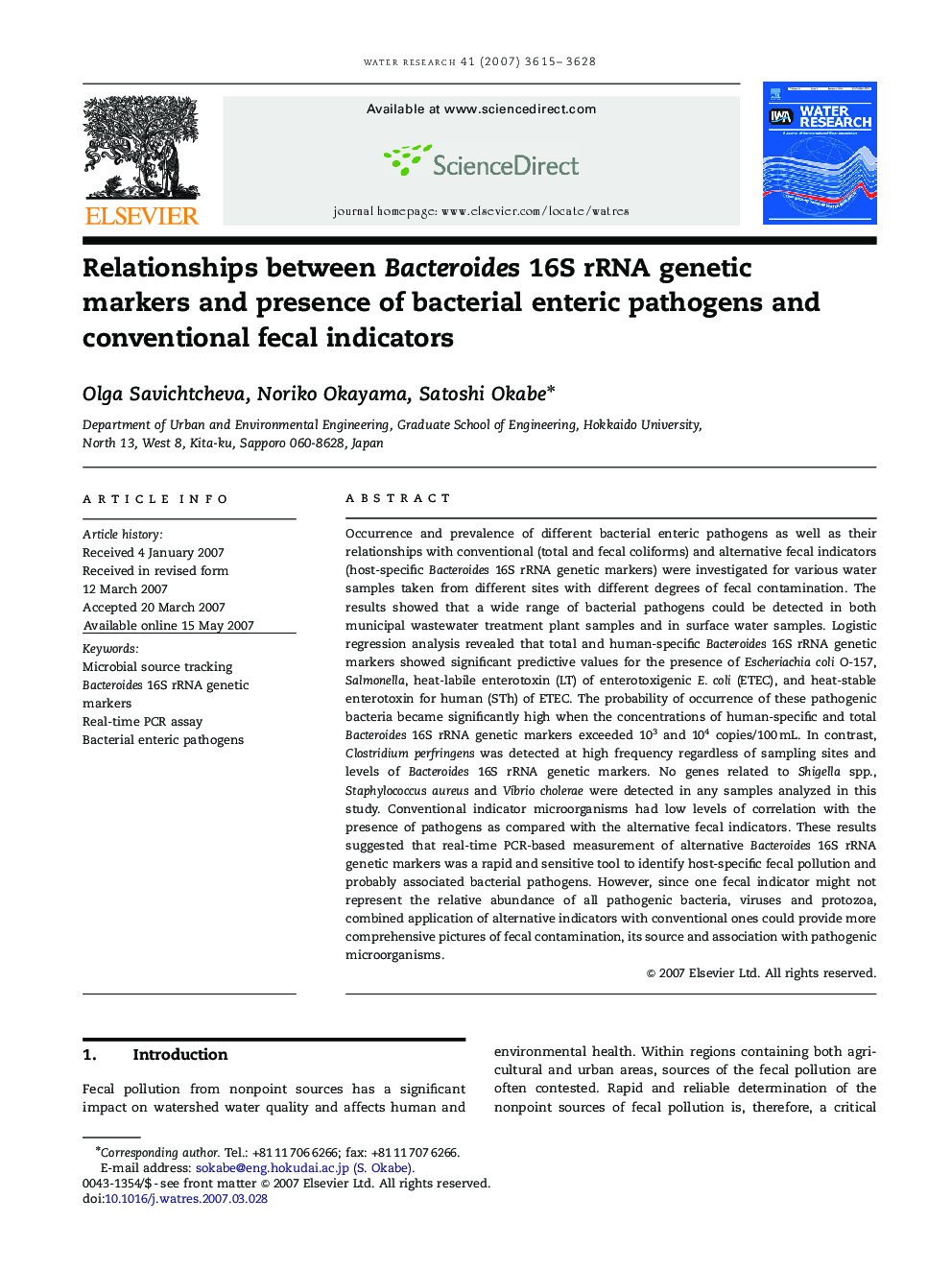| Article ID | Journal | Published Year | Pages | File Type |
|---|---|---|---|---|
| 4486202 | Water Research | 2007 | 14 Pages |
Occurrence and prevalence of different bacterial enteric pathogens as well as their relationships with conventional (total and fecal coliforms) and alternative fecal indicators (host-specific Bacteroides 16S rRNA genetic markers) were investigated for various water samples taken from different sites with different degrees of fecal contamination. The results showed that a wide range of bacterial pathogens could be detected in both municipal wastewater treatment plant samples and in surface water samples. Logistic regression analysis revealed that total and human-specific Bacteroides 16S rRNA genetic markers showed significant predictive values for the presence of Escheriachia coli O-157, Salmonella, heat-labile enterotoxin (LT) of enterotoxigenic E. coli (ETEC), and heat-stable enterotoxin for human (STh) of ETEC. The probability of occurrence of these pathogenic bacteria became significantly high when the concentrations of human-specific and total Bacteroides 16S rRNA genetic markers exceeded 103 and 104 copies/100 mL. In contrast, Clostridium perfringens was detected at high frequency regardless of sampling sites and levels of Bacteroides 16S rRNA genetic markers. No genes related to Shigella spp., Staphylococcus aureus and Vibrio cholerae were detected in any samples analyzed in this study. Conventional indicator microorganisms had low levels of correlation with the presence of pathogens as compared with the alternative fecal indicators. These results suggested that real-time PCR-based measurement of alternative Bacteroides 16S rRNA genetic markers was a rapid and sensitive tool to identify host-specific fecal pollution and probably associated bacterial pathogens. However, since one fecal indicator might not represent the relative abundance of all pathogenic bacteria, viruses and protozoa, combined application of alternative indicators with conventional ones could provide more comprehensive pictures of fecal contamination, its source and association with pathogenic microorganisms.
